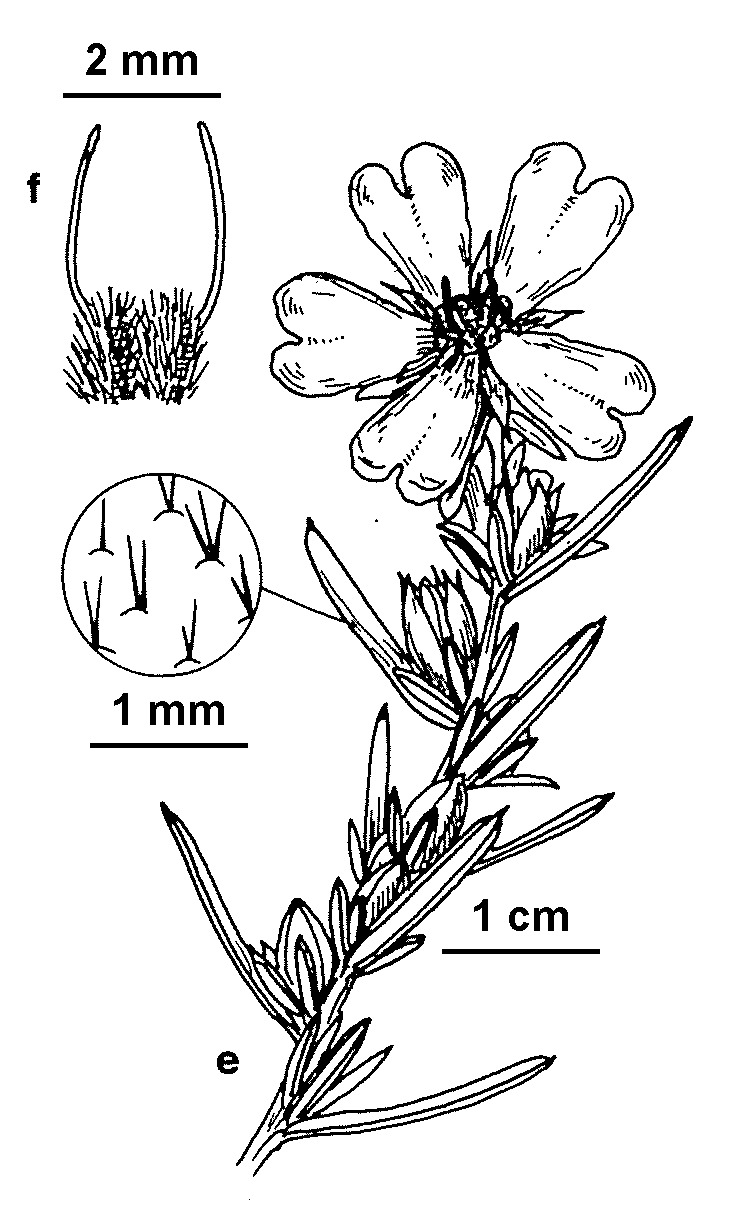Hibbertia calycina
(DC.) N.A.Wakef.Shrubs to c. 1 m high, with erect pubescent branches, with many short shoots. Vestiture of usually short simple tubercle-based hairs, rarely bifurcate or few-branched. Leaves linear, 3.5–15 mm long, 0.5–0.9 mm wide, acute with central ridge continued into apex; upper surface with scattered hairs often reduced to tuberculate bases; petiole 0.3–0.9 mm long; margins broad, revolute, raised above and touching broader, glabrous central ridge below. Flowers sessile, terminal mainly on short shoots, reduced leaves and 1 triangular flat bract 1.4–2.2 mm long; sepals 4.4–6.8 mm long, unequal, puberulous to tomentose; petals usually oblong-obovate, 5.6–8.5 mm long, bright to deep yellow; stamens 8–18 in one cluster; filaments free to slightly connate basally; carpels 2, tomentose to villous. Flowers Sep.–Nov.
GipP, CVU, NIS, EGL, EGU, HSF. Also NSW, ACT, Tas. Occasional in dryish open-forest of foothills and ranges, on the southern and northern slopes of the Great Dividing Range, mostly east from about Heyfield and the Strathbogie Range respectively.
Very similar to some forms of Hibbertia riparia but distinguished by the commonly short simple hairs and sessile flowers mainly on short shoots. Hibbertia strigosa was previously included in this species, see note under H. strigosa.
Toelken, H.R. (1996). Dilleniaceae. In: Walsh, N.G.; Entwisle, T.J., Flora of Victoria Vol. 3, Dicotyledons Winteraceae to Myrtaceae, pp. 300–313. Inkata Press, Melbourne.
 Spinning
Spinning
